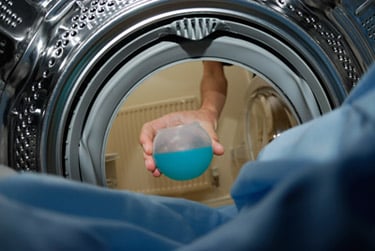How to clean fabric ducts


How to clean fabric ducts
We have spent thousands developing our own in house washing facility to clean fabric ducts, where we inspect, wash/treat and cool dry our customers fabric ducting products (no matter who made them), to ensure that we’re giving the very best care to every system we look after. However, many companies want to make their own arrangements and we respect that, which is why we’ve prepared this handy guide to how to clean air sock systems for proper fabric duct maintenance.
Introduction:
Food manufacturing systems will need cleaning every six to twelve months due to hygiene requirements. Laboratories will need it every twelve to twenty four months. But generally all types of ducting should really be cleaned after a 5 year operational period – metal or fabric, purely from a hygiene/dust/efficiency perspective. The ideal time will be when access is available and the system is not required.
Fabric ducts may need washing for one of several reasons:
(1) The duct has become blocked with dust and is causing system inefficiency and loss of performance
(2) The duct has signs of dirt on the outside and it is no longer aesthetic.
(3) The hygiene requirements of the room/system require regular cleaning
Fabric ducts simply slide out their suspension rails and can be washed directly in a standard or industrial washing machine at 40oc.
Procedure to clean the fabric ducts:
1. Very dusty diffusers need to be cleaned first by means of vacuum cleaner (pressurised air, soft brush), turn inside out and vacuum first, then vacuuming outer surface last before moving to step 2.
2. Polyester Ducts – Wash in washing machine with industrial washing detergents (dosing as per supplier recommendation), at 40 °C. We recommend spinning at 400 rpm and intensive rinsing. Depending upon the contamination level, the washing cycle may need to be repeated. Fabric Ducts which are not machine washable (usually PVC coated) can be cleaned by vacuum cleaner, floor cloth or hose pipe.
3. Add disinfection into the wash if required as part of your hygiene process. The chemicals used for disinfection must not affect the fabric (see the washing symbols), detergents dosing as per the supplier’s recommendation.
4. Either drip dry the diffusers well after washing and install or install slightly damp and allow the supply air to dry the ducts. DO NOT TUMBLE DRY or in any other way heat the fabric above 40°C when drying as this may result in damage.
5. DO NOT STORE DAMP – mould can occur and this damage is impossible to remove completely.
You can read more about the washing procedure here.
Looking for more information?
Our experts are on hand to answer any questions. Why not give us a call or drop us a message, We’ll work with you to find the right solution.
Contact us

